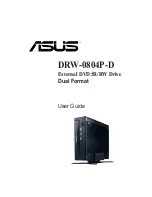
RE 15345-WA, Version 11.2022, Bosch Rexroth AB
Troubleshooting |
Drive system Hägglunds Fusion 69/72
Causes Of Trouble And Its Effect In The Hydraulic Installation
Pressure Valves
Flow Control
Valves
Directional
Control Valves
Fluid
Motor
Others
1. Operating
pressure set too
low.
2. Internal Leakage
due to wear.
3. Dirty or
damaged valve
seat.
4. Broken spring.
5. Unsuitable type
(setting range too
low)
1. Flow rate set
too low.
2. Unsuitable
valve type
(operatingrange
too low).
3. Valve blocked
due to dirt.
1. Wrong switched
position.
2. Solenoid
defective.
3. Internal leakage
due to wear.
4. Excessive fluid
velocity.
5. Spool jams or
sticks.
6. Manually
operated valves are
not open.
1. Viscosity too
low, causing
excessive leakage.
2. Viscosity too
high, causing
excessive flow.
3. Fluid foams.
1. Internal leakage.
2. Wear of running
surfaces.
3. Excessive
internal friction,
causing low
efficiency.
4. Seizure in
Hydraulic motor.
1. Conditions
for starting not
fulfilled.
2. Electrical lines
opencircuit
3. Signalling
elements, such
as pressure or
limit switches,
are defective,
wrongly set, or not
connected.
1. Constant
delivery flow is too
high.
2. Undersized
valve.
3. Pressure setting
too high.
4. Response time
too long.
1. Flow rate set
too low (excessive
pump delivery
through pressure-
relief valve).
2. Valve defective.
1. Leakage losses
too high.
2. Pressure less oil
circulation if used,
fails to switch on.
3. Spool sticking.
1. Viscosity too
low, causing
excessive leakage.
2. Viscosity too
high, causing
excessive flow
resistance.
3. Fluid foams.
1. Losses in
efficiency due to
wear.
2. Internal friction
too high (poor
level of efficiency).
3. Internal leakage
losses.
1. Cooling
performance
inadequate.
2. Pressure less
oil circulation
when the pump is
running.
3. Insufficient
hydraulic fluid.
4. Coolant valve
failed.
5. Thermostat set
too high.
6. Fan not switched
on.
7. Ambient too
high.
8. Deposits in
radiator.
1. Valve switches
too quickly.
2. Restrictors
or orifices are
damaged or
missing.
1. Switching time
set too short.
2. Unsuitable
type of valve
(the opening
cross-sectional
area changes too
quickly).
1. Foaming of the
hydraulic fluid.
1. Excessive
masses or forces.
2. No damping.
1.Sequence valve
or shut-off valve
has wrong setting.
1. Pressure switch
differential set too
low.
2. Pressure switch
set incorrectly.




































